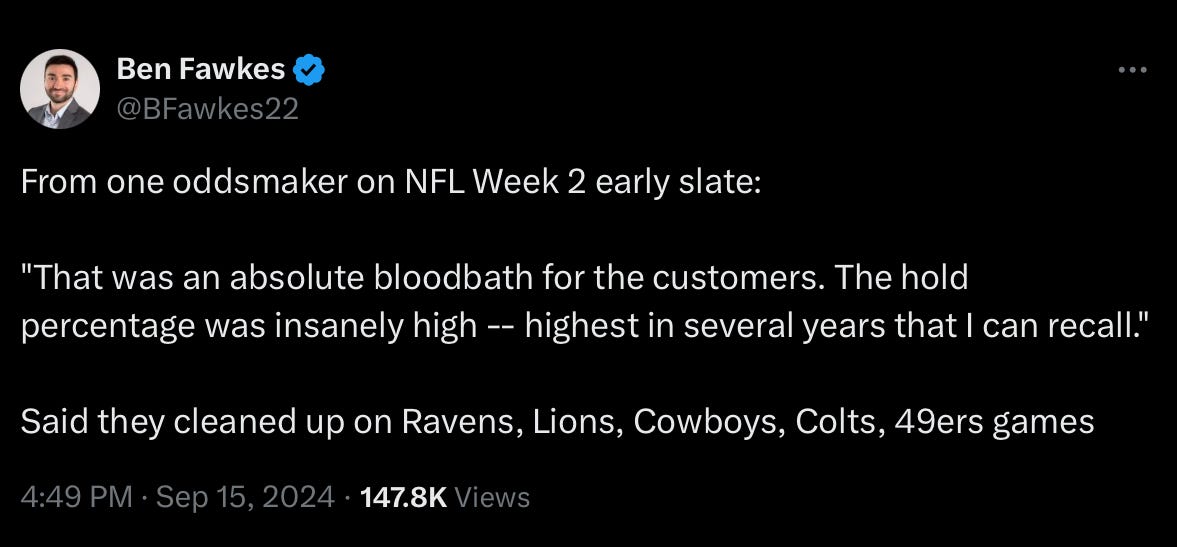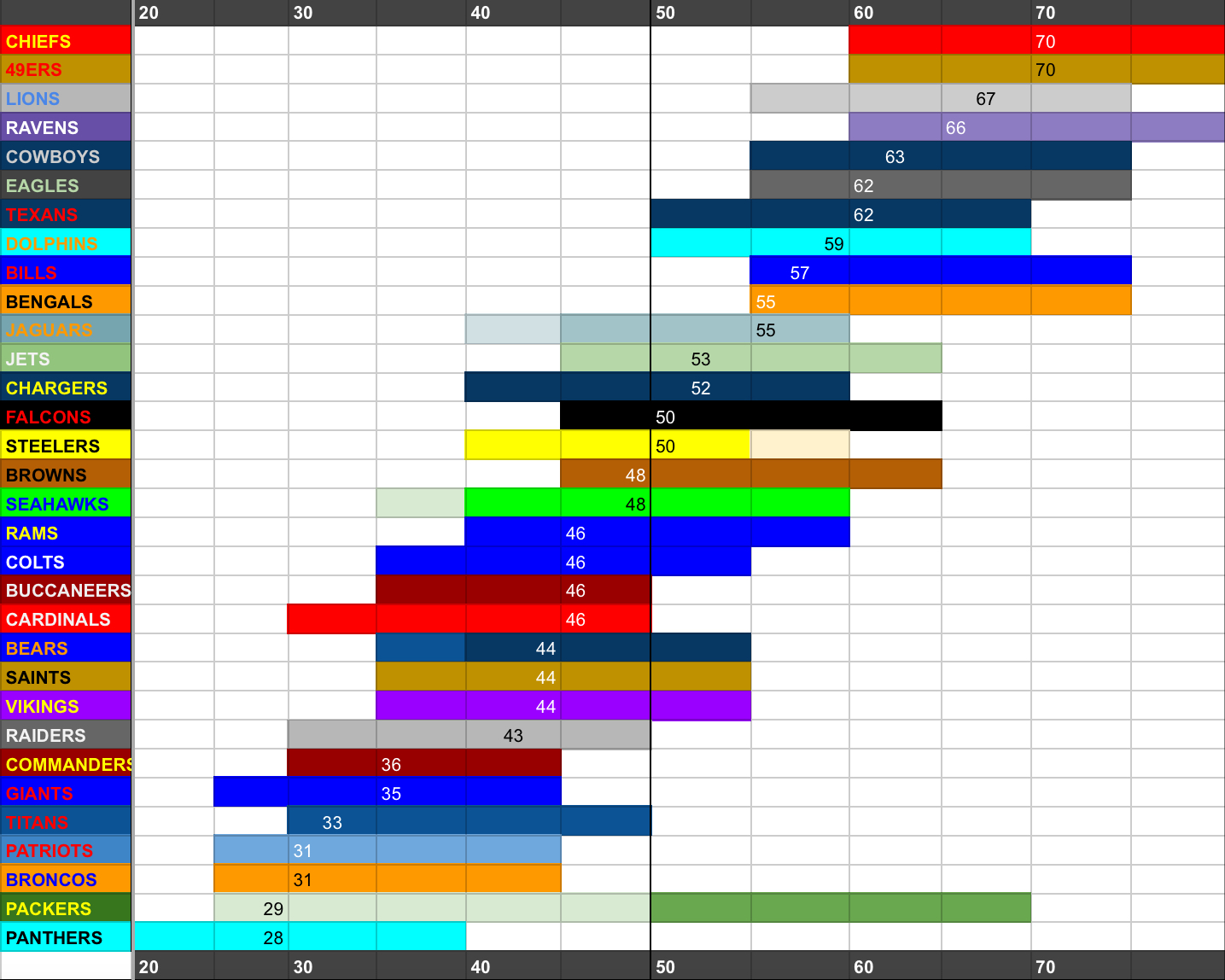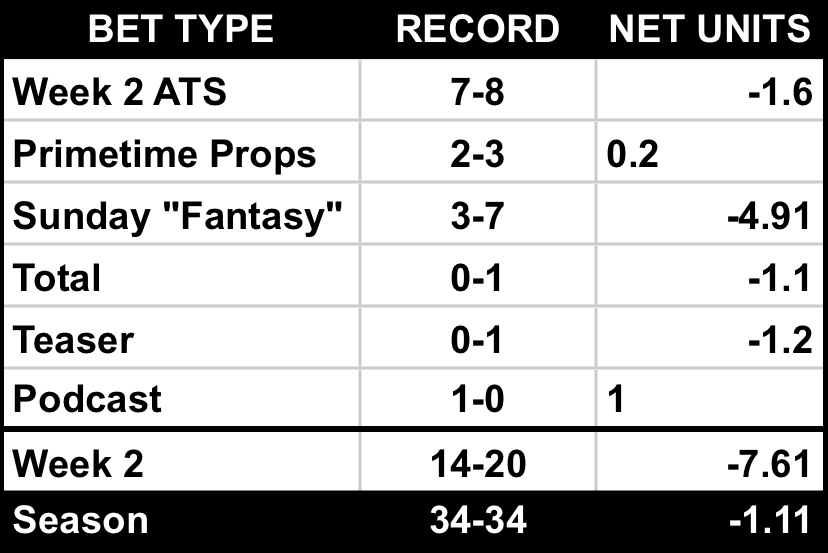Week 2 wasn’t pretty here, but for many it was a lot worse.
Here’s a tweet from fellow-Substacker, and betting reporter
:Having the Buccaneers, Saints, Packers, and Vikings is a feather in our cap, but that was the best we did in navigating the expected unexpected of Week 2 on route to a 7-8 record against the spread.
It shouldn’t be all relative, but when you see the carnage happening in not just the Circa Survivor contest (two-thirds of 14,000+ entries already eliminated) but also Circa Million - as Fawkes’ notes, you have to feel a little less foolish.
For a breakdown of Week 2 and all the betting takeaways, check out the Tuesday episode of THE WINDOW: Sports betting podcastEstimated market ratings
Before the season, we explained the process of how the betting market takes the first odds offered from sportsbooks about a team’s quality - regular season win (RSW) totals - and translates that into a team rating.
Each game provides a subsequent data point that we receive from oddsmakers and bettors alike - the closing line (the last available point spread to bet before kickoff).
Taking the most recent game’s closing line into account, we adjust every team’s market rating to reflect where they were relative to the rest of the league before the previous week’s games.
These are not power rankings - a largely pointless exercise done for clicks - that simply lists each team in a made-up order for readers to argue about.
They are ratings, which allow for the possibility that teams can be perceived to be equal - or have a large gap - amongst the other 31 teams in the NFL. To better understand the chart above, refer back to Week 1’s market rating column. You can argue about them, OR you can just bet against them.
The first - and most instructive - thing to note is what happened to the Packers’ market rating with Malik Willis in for the injured Jordan Love. While they are limited in what they’re capable of offensively, they proved on Sunday that they shouldn’t see their rating blow through the bottom of their ranger, and be relegated down to the level of the Bryce Young-led Panthers.
Speaking of Carolina, they attracted alleged sharp money, as it was recognized that being 6-point underdogs at home to the Chargers was quite a downgrade. However, for as many unnecessary rating drops as there were in Week 2, the Panthers’ proved to be even worse than we ever thought possible. Heading to Week 3, they’ve already benched Young, turning to Andy Dalton, and a shift to the opening point spread against the Raiders has already occurred, going from Las Vegas -7 to -5.5.
The Browns, Bengals, and Bills all saw their rating drop to the bottom-end of the range that they’ve played to in recent seasons. While less obvious than the Packers’ example, we should have acknowledged why that was the case - sluggish to downright lazy efforts in Week 1 - and expected better in Week 2, grabbing the value on them against the spread.
Conversely, just as the Chiefs and 49ers pushed into the 70s, their point spreads inflated up over a field goal against the Bengals (at home) and the Vikings (on the road). What happened? Neither covered.
The Jaguars tilted towards the high-end of their range. Did they play to it against the Browns? Nope.
In general, when a team wins and covers, you’ll see them move up by two ratings points. When they lose and don’t cover, they’ll drop by two. If they do one of two, a single ratings’ point change is most likely.
The biggest mover from Week 1 to Week 2? Not-so-shockingly, the Cowboys went from an estimated market rating of 57 to 63. Even less shockingly, that didn’t work out well for them or their backers.
Lastly, the Falcons had a comparable rating drop to the Panthers before their Monday-nighter in Philadelphia, as they went from high enough be +3.5 in the lookahead line down to +6.5 on open. Were it not for the Falcons’ miracle win, whether or not you covered, pushed, or lost, would have been decided by WHEN you bet, amidst the rating fluctuations of each team.
It’s easy to overreact to what we see in Week 1, but every season we’re reminded that it’s just one game. As we look ahead to Week 3, it’s even harder, because for many teams that have underperformed or pleasantly surprised, a second data point is hard to ignore.









